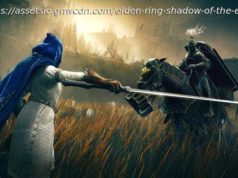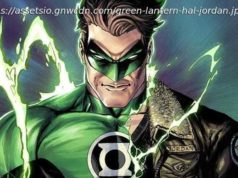Fixed-angle Fantasy.
There’s a small, almost incidental sequence that I’ve often thought about since I first played Final Fantasy 9. In it, Princess Garnet (or ‘Dagger’, …
Fixed-angle Fantasy.
There’s a small, almost incidental sequence that I’ve often thought about since I first played Final Fantasy 9. In it, Princess Garnet (or ‘Dagger’, at this point in the game) and her buffoonish knight Steiner have a conversation whilst in a hillside cable car, all brass and rivets. Soon after they are reunited with thespian/thief Marcus in the station café, before the next leg of their journey. The area is framed from up high, round tables and stools and bottle green gas-lamps. The lighting is warm, people are chilling, and the music is a near-lullaby recorder version of the game’s theme Melodies of Life. The scene feels recognisably suspended, in transit. An enclave of calm and safety removed from normal concerns, like morning light on a weekend lie-in.
Marcus notes that Garnet has changed during her adventures, now more experienced, talking in slang. This is later in another carriage, and you mainly see the back of her seat throughout the conversation, as if happening upon it as it unfolds. Then she gets up, suddenly excited to talk about the things she’s seen, the battles she’s fought. And then, ‘I’ve always wanted to see the marvellous architecture of Treno! I can hardly wait!’.
‘On second thought’ – Marcus thinks, in a thought bubble – ‘she hasn’t changed that much’.
I think what stuck with me was the sense of an in-between time, but captured, noticed. Made visible by its inclusion but still casual, offhand, overheard in the way it’s framed on the screen. It’s even more effective because the cable car and station sequences straddle more dramatic scenes with hero Zidane and the rest of the gang in the ravaged, rain-pelt kingdom of Burmecia. And I love the sense of scope this brings, that adventures are big (cosmically so, this being Final Fantasy) but they’re also asymmetrical and irregular and the small bits matter, too. But also, I love how much of this texture comes from the fixed-perspective backdrops of the game.
Now you might have guessed, but I only started this replay because I was Full Of Hype from all the Final Fantasy 7 Remake coverage. My YouTube algorithm had doubled-down on reviews and comparisons and Let’s Plays. Between you and me, I even got emotional watching a YouTube player herselfget emotional at the Remake’s title screen and I’ve barely even played the original. And I never normally watch Let’s Plays! I don’t even have a PS4!
I had bought 9 for the Switch previously though, not because I had any intention to actually replay my Favourite Ever Final Fantasy – of the four I’ve played, tied with 12 – but because I vaguely intended to use the new modifiers like No Encounters and Speed-Up to have a dip sometime. A quick-flick through a fondly remembered journey I once took – charming and painterly and medieval-adjacent. I think I’d pegged FF9 as an aesthetic and world I loved (which reminds me of Crystal Chronicles too actually, which is gorgeous), but draped and fastened around a rickety old gameplay machine. I’d bought it as a playable nostalgia prompt, I had no real interest in playing it again properly.
But all that Hype pushed me over – along with those Speed-Up and No Encounters options – and I decided to play a bit, then a bit more, and then a lot. Because to my surprise, the thing holds up! Battle animations have real crunch and flair (and that mid-air hang-time of Freya’s Spear!). The menu work is responsive and engrossing, with that bright and breezy chime-squeak noise. Even Zidane’s run gait and footstep patter seems somehow right-on and satisfying, with that little whoosh on jumps. And pressing your way through the game’s story grammar of dialogue boxes and panto reactions feels less archaic and limited than just different but charming: A uniquely-video game hybrid of reading and theatre, metered out and sped-up with button-presses and without the tedium of voice recordings read out slower (and false-er) than you can read.






